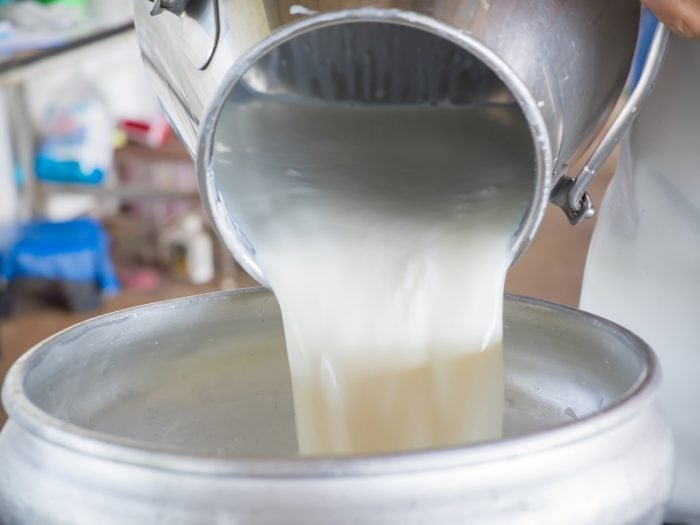You have likely heard of raw milk before, but there aren’t many people who regularly drink it. Raw milk aids in keeping strong bones, skin care, weight loss, & digestion. It is unpasteurized milk, the process in which it is heated to kill bacteria. However, there are some interesting nutritional and health benefits that make raw milk worth investigating if you are trying to maintain a more natural and holistic diet.
What is Raw Milk?
For thousands of years, when humans consumed the raw milk of various animals, such as cows and goats, there was no additional treating or processing to make it any healthier. Raw milk, therefore, is milk that is unpasteurized – the process in which it is heated to kill the majority of bacteria. When this bacteria is neutralized, it prevents the milk from going sour, which is important if you are planning to store it for an extended period of time.
Due to the fact that this milk has not undergone any pasteurization or homogenization processes, it is considered a “complete” food and retains all of its natural enzymes, fats, and nutrients. While there are certain health concerns with drinking unpasteurized milk, taking the proper precautions and being aware of the risks can make this quite a healthy choice, particularly for people that have livestock, but lack access to processing facilities. [1]
Nutrition Facts of Raw Milk

Raw milk or unpasteurized milk is milk that has not been pasteurized. Photo Credit: Shutterstock
Raw milk is packed with key nutrients that are beneficial to the body, including probiotics, raw fats, vitamin B12, vitamin B6, carotenoids, calcium, phosphorous, magnesium, and iron, as well as omega-3 fatty acids, conjugated linoleic acid, vitamin K, and a number of digestive enzymes.
Benefits of Raw Milk
The best-unpasteurized milk health benefits include its ability to reduce allergic reactions, improve the health of the skin, strengthen the immune system, boost digestive health, promote weight loss and increase bone density, among others.
Skin Care
With a good amount of carotenoids and omega-3 fatty acids, raw milk can help to boost the appearance of your skin by reducing oxidative stress and inflammation, which can minimize the appearance of wrinkles and blemishes. [2]
Aids in Digestion
Probiotics found in untreated milk can help optimize the bacterial balance in your gut, while the many digestive enzymes in this beverage can improve your nutrient uptake efficiency. [3]
Weight Loss
The density of nutrients and minerals, particularly calcium, in this milk make it an ideal complement to a weight loss diet, as your body won’t be experiencing any lack of nutrients. [4]
Improves Bone Density
Unpasteurized milk is perfect for boosting bone mineral density as it is packed with minerals and other digestive enzymes. [5]
Allergic Reactions
Research has shown that this milk can optimize the immune system and reduce the severity of allergic reactions throughout the body. [6]
Raw Milk Uses
Some of the most popular uses of unpasteurized milk include drinking it by itself, producing farmer’s cheese, boosting the health of your garden (as a fertilizer), or even making yogurt. This form of milk is best used quickly, as it will begin to sour as the bacteria present in it begins to produce waste. However, the density of nutrients makes it an ideal ingredient in various culinary and home care practices, and its health benefits are undeniable. [7]
Difference: Raw Milk & Pasteurized Milk
The difference between raw milk and pasteurized milk is quite simple; unpasteurized milk has not undergone any pasteurization or homogenization processes. Pasteurized milk has been heated to a certain temperature (at least 160 degrees for 15 seconds) to eliminate any bacterial elements that could cause illness or sour the milk. While raw milk may have a higher bacterial level than pasteurized milk, it also contains certain enzymes and nutrients that may be lost during the pasteurization process. [8]
Raw Milk Risks
There are a few risks inherent in raw milk, as that of foodborne illnesses. Without the pasteurization process, the raw milk may contain bacteria like E. coli, Listeria, and Salmonella, which can cause significant gastrointestinal distress, including nausea, diarrhea, vomiting and stomach pain. There have been roughly 1,000 cases of illnesses directly linked to drinking raw milk in the past 20 years, but there have been no reported deaths. [9]
